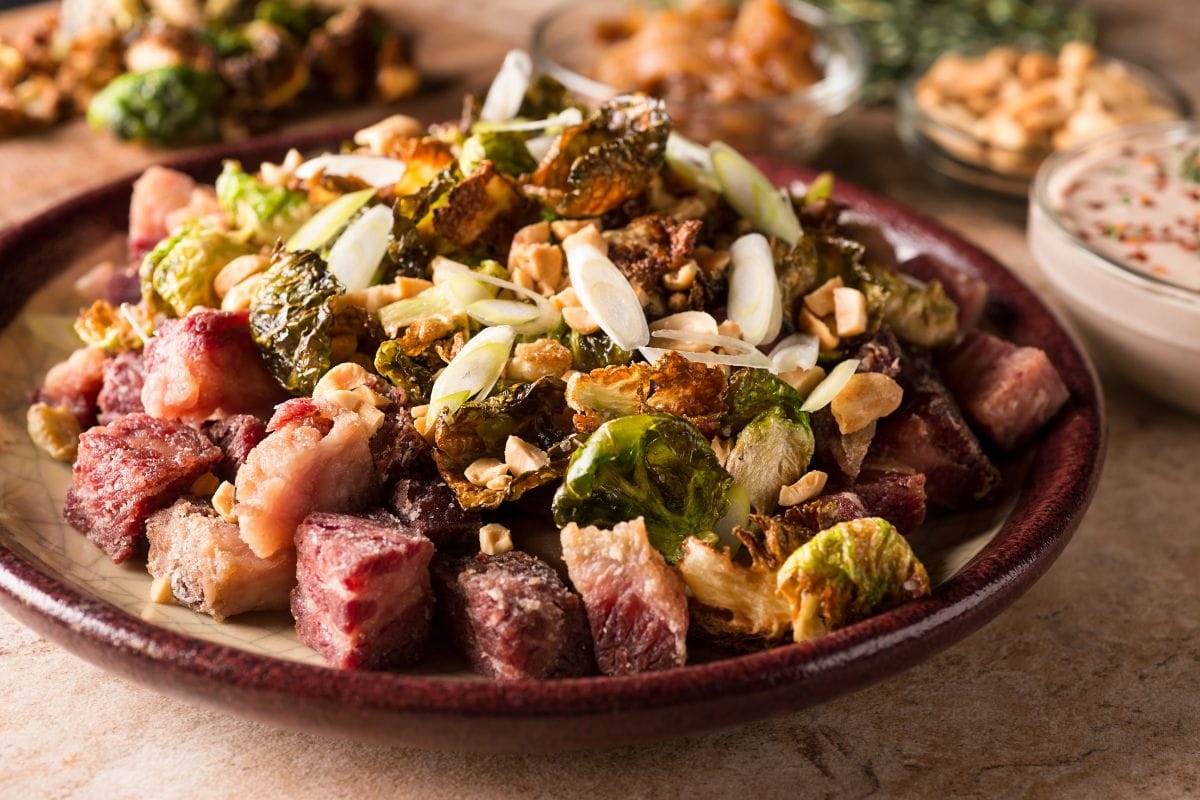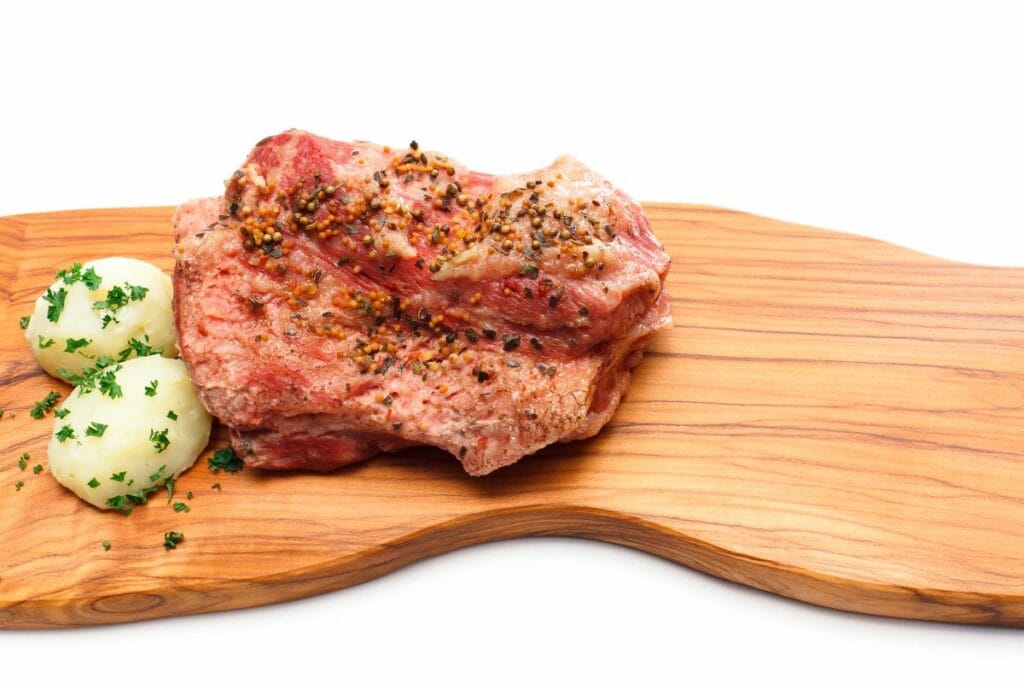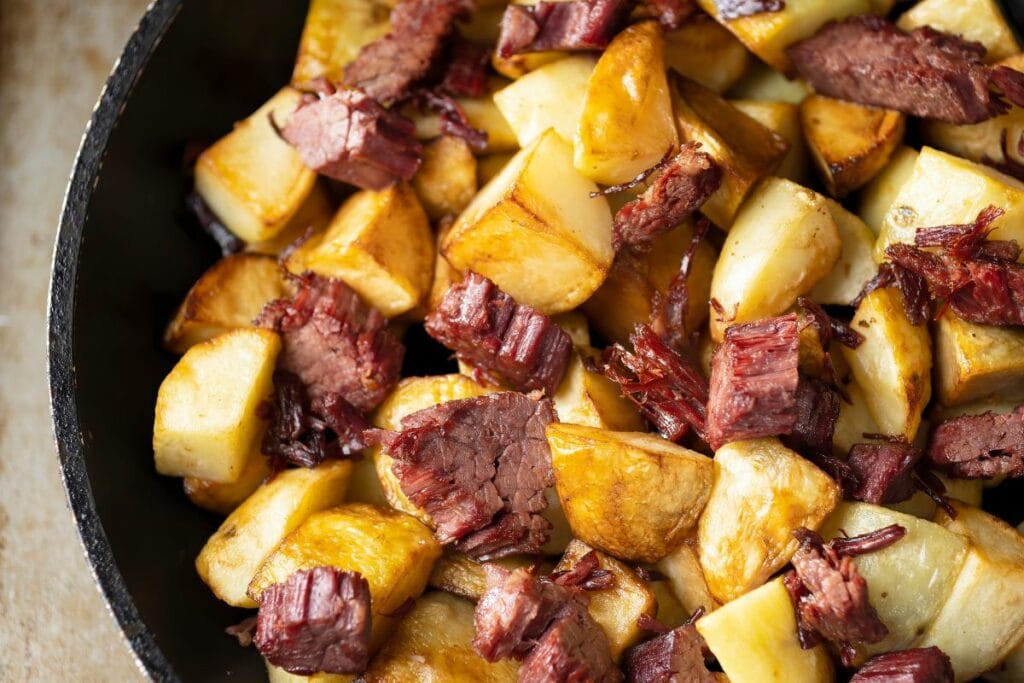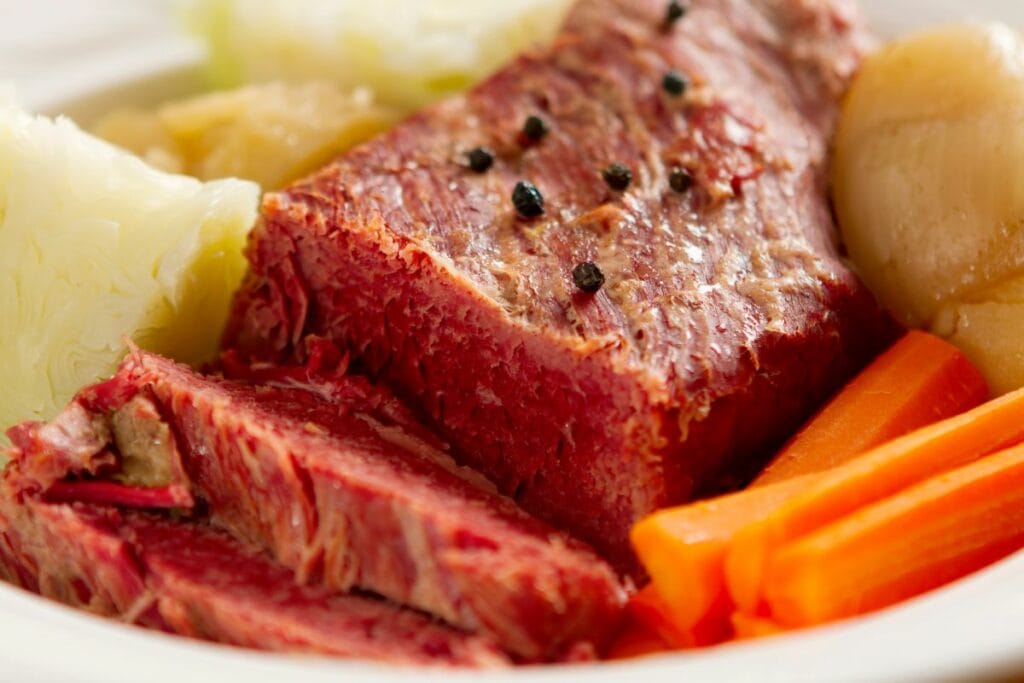Make no mistake about it. The point cut is the best cut of corned beef. This cut has more marbling to ensure juiciness, tenderness, and flavor. It also has more fat which helps lock in moisture in the corned beef.
When it’s time to make that St. Patrick’s Day corned beef, I’m sure one of the first questions running through your mind is, should I buy a point or flat cut for my corned beef? I found out the answer after my time at the culinary school. But this was after several failed tries.
In this article, I’ll analyze why I think the point cut is the best for corned beef. I’ll also tell you exactly what the point cut and flat cut are and how to make your favorite Patrick’s Day corned beef.

First, the whole brisket is basically a special US cut of beef. When cutting a full packer brisket, it’s cut along two different muscles, the point and the flat.
The flat cut is the beef brisket’s relatively lean and flat (hence the name flat) part. Thin slices cut against the muscle fibers are later made from the flat cut.
I like to use points for corned beef rather than a flat cut.
Points are a little more forgiving and tender when cooked. They make great corned beef and cabbage.
The point rests on the flat and is separated by a layer of fat. You can easily recognize the two muscles by the layer of fat and the different course of the fibers.
The point cut one is more marbled and thicker than a flat cut corned beef: the more intramuscular fat a fresh brisket has and the higher the quality, the better the result.
A German brisket from the heifer and an Australian full-blood Wagyu brisket are all suitable (if of the right quality) for the long job. But the Wagyu is usually breathtakingly good.
If you have a good butcher you trust, talk to him about what you want and what you’re trying to do.
NOT ALL generic point cuts at the grocery store are actually point enough for making corned beef!

Corned beef is simply a cut of beef that has been cured in salt brine. It tastes like spicy beef, but corned beef is also salty, sour, flavorful, and more. Sometimes, corned beef is ground and cooked.
You can cure it in whole just like I’ll show you today.
After bringing the meat in the salt solution, this meat substance gels. It then creates a sliceable shape perfect for your pastrami, for example.
This beef is served cold or hot. Some commercial corned beef products (which you must have seen) are available in cans or as cold cuts.
Finally, this beef contains a lot of vitamin B3, essential for various metabolic processes in the body. It also contains riboflavin, niacin, phosphorus, calcium, iron, and magnesium.
The brisket point cut is a delicious cut of beef with fat and connective tissues perfect for making corned beef.
This part of the beef brisket has more fat which can help lock in moisture in the corned beef. I also found that the fat on this cut of meat adds a lot of flavor to the corned beef after brining.
You need fat in your corned beef, and you can only get this from the point cut. The flat cut corned beef will end up too lean and won’t give you what you need in terms of tenderness and flavor.
So, when planning to brine your corned beef, you’re not just supposed to use the point cut. You should also retain some of that thick fat cap. This is what makes the beef delicious and fork-tender.
Also, you have to consider that a corned beef flat cut is slightly more expensive because they have a little fat cap and more lean meats.
Compared to the corned beef flat cut, the point cut corned beef is usually inexpensive, which is part of the reason why corned beef became popular.
Corned beef was one of the most consumed meat during the world wars due to its storability, availability, and low price.
Related Reading
After the first week of March, it’s time to brine a nice piece of corned beef so you can enjoy it on Saint Patrick’s Day on March 17.
After fermenting for a few weeks in a brine flavored with herbs and spices, the corned beef is ready to be cooked.
I like to have the meat rested all winter in the salting tub. Then, when spring comes, it’s time for cabbages to grow in the vegetable gardens.
On Saint Patrick’s Day, March 17, it is a tradition to feast on a corned beef dish accompanied by new cabbage.
It’s a festive dish, which has today become even more traditional among Americans.
Enough stories, here’s the recipe for your St. Patrick’s Day corned beef.

First, we will be brining the corned beef. Please note, we’re using a point cut of beef brisket.
For fermentation, you need 10 days maximum to brine your corned beef in salt. I’ve seen some of my colleagues do it for 5 to 7 days. I advise you to brine your corned beef for not more than 10 days.
Start by rinsing and drying your piece of meat. There is no need to remove the fat on your point. If the fat is too much, you may trim some and leave some.
Then prick it many times from side to side with a trussing needle. A metal skewer will do if you don’t have a trussing needle.
Put it in a container you have chosen for salting.
Boil water, add your spices and salt, and let cool.
Then pour this cold brine over the meat in the container. It must be covered entirely.
Place a board or plate smaller than the container on top. Then place the weight. This ensures that the meat cannot float but is submerged well in the liquid.
Let the meat brine for 10 days. The first one I made was eaten after seven days. The second stayed for 10 days and was much better than the first.
From time to time, check that the meat remains perfectly under the brine level, and add more if necessary. In any case, ensure the solution always contains around 20 percent salt.
Take the meat out of the brine before the meal or after the 10th day. Then rinse it thoroughly under cool water.
Desalt for six hours to overnight in fresh water depending on how long you’ve brined the meat.
There are many ways to cook corned beef. First, you can boil the meat in broth over low heat for three hours. I also like to simmer it for the same time in a casserole or slow cooker.
If you have the equipment, you can also smoke it to make pastrami.

Corned beef is tender, meaty, and flavorful. That’s if you use the right cut of brisket, which is the point.
The best corned beef is the one with marbling, some fat cap, and connective tissue. They brine better, cook tender, and taste flavorful!
The purpose of brining beef to make corned beef is so that all the salt and spice can penetrate as the meat softens. This helps to slow the spoilage of the meat.
With a flat cut corned beef, you’ll see that the meat will end up lean and won’t lose enough. The spices will not get in, which might not be something you’re aiming for.
Note that the point recommendation is not limited to just when you’re making homemade corned beef. You should also apply this rule when next you are out buying corned beef.